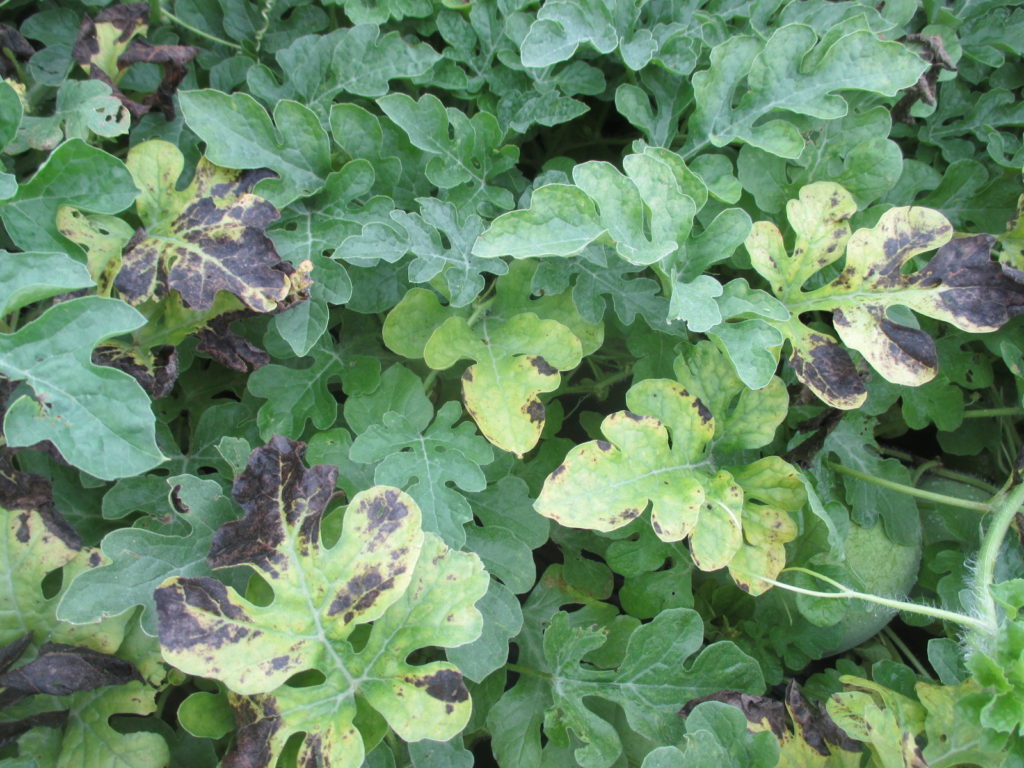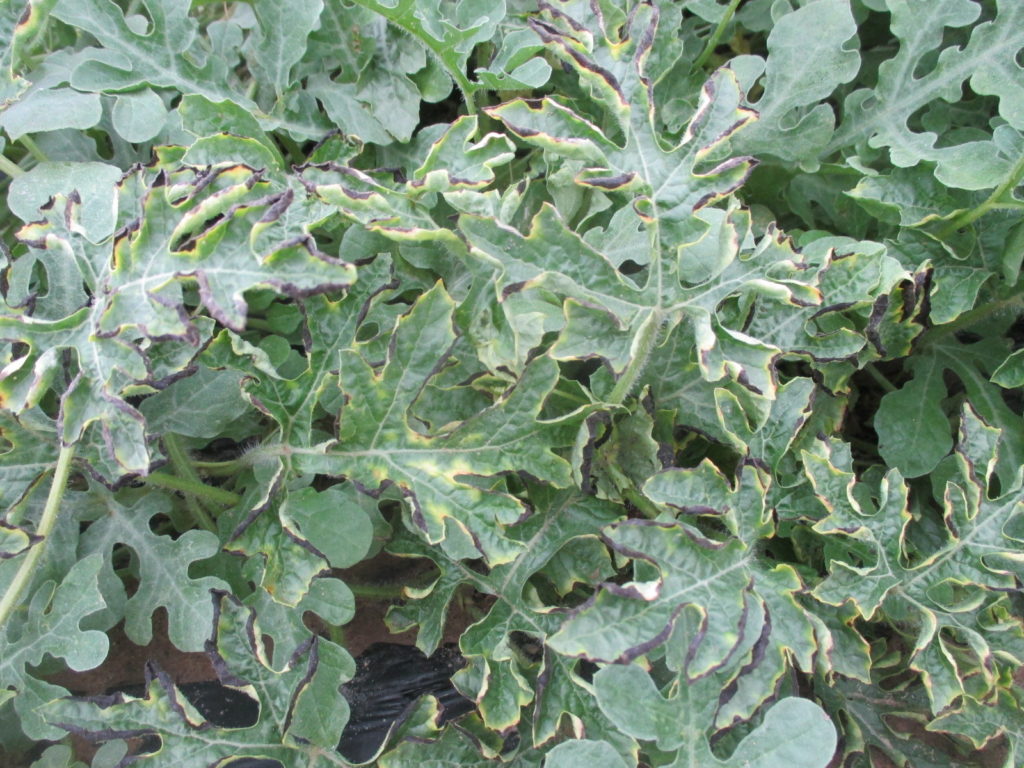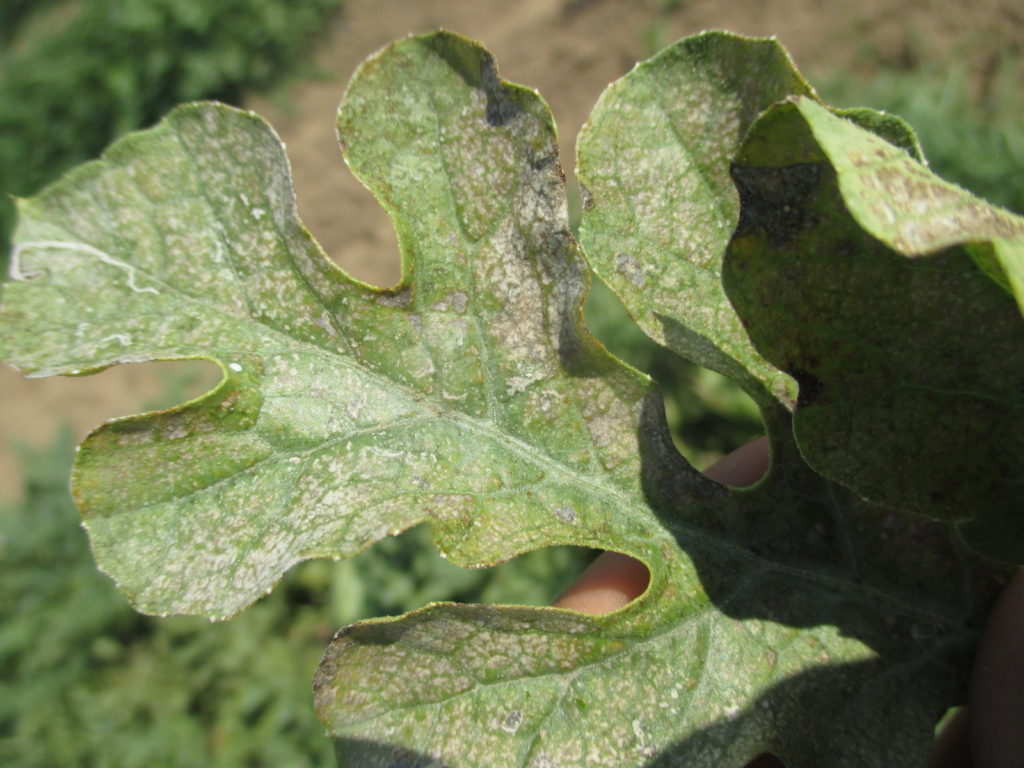Watermelon harvest is in full swing in southern Indiana. At this time, we frequently see many types of leaf symptoms. Some of them are caused by foliar diseases, such as anthracnose, Alternaria leaf blight and gummy stem blight. These diseases require special attention, normally in the form of fungicide sprays, to slow spread of the disease. However, the appearance of a moderate amount of foliar disease in mid-season doesn’t necessarily need an immediate fungicide application. Other leaf symptoms may not be caused by diseases or insects. Here are some examples of leaf symptoms that are not associated with a pathogen.

Figure 1. The symptom was only on one pollinizer variety. This is likely a unique plants’ response to environmental factors.

Figure 2. The symptom also was on one pollinizer variety.

Figure 3. The symptom appeared on one seeded watermelon variety in our variety trial. It is similar to initial symptoms caused by ozone toxicity. More information about air pollution on melons can be found in this article Identifying Air Pollution Damage on Melons.

Figure 4. The symptom occurred when soil pH ≤5.5, which leads to manganese toxicity or magnesium deficiency. The symptom is more often observed on cantaloupes.
It is important to correctly identify the source of the symptom to prevent unnecessarily pesticide spray. In the article When a yellow leaf is just a yellow leaf, Dr. Dan Egel discussed general rules for determining if the symptom is a disease or not.
If you are not certain whether the symptom is associated with a disease or pest, send samples to Plant and Pest Diagnostic Laboratory for identification.